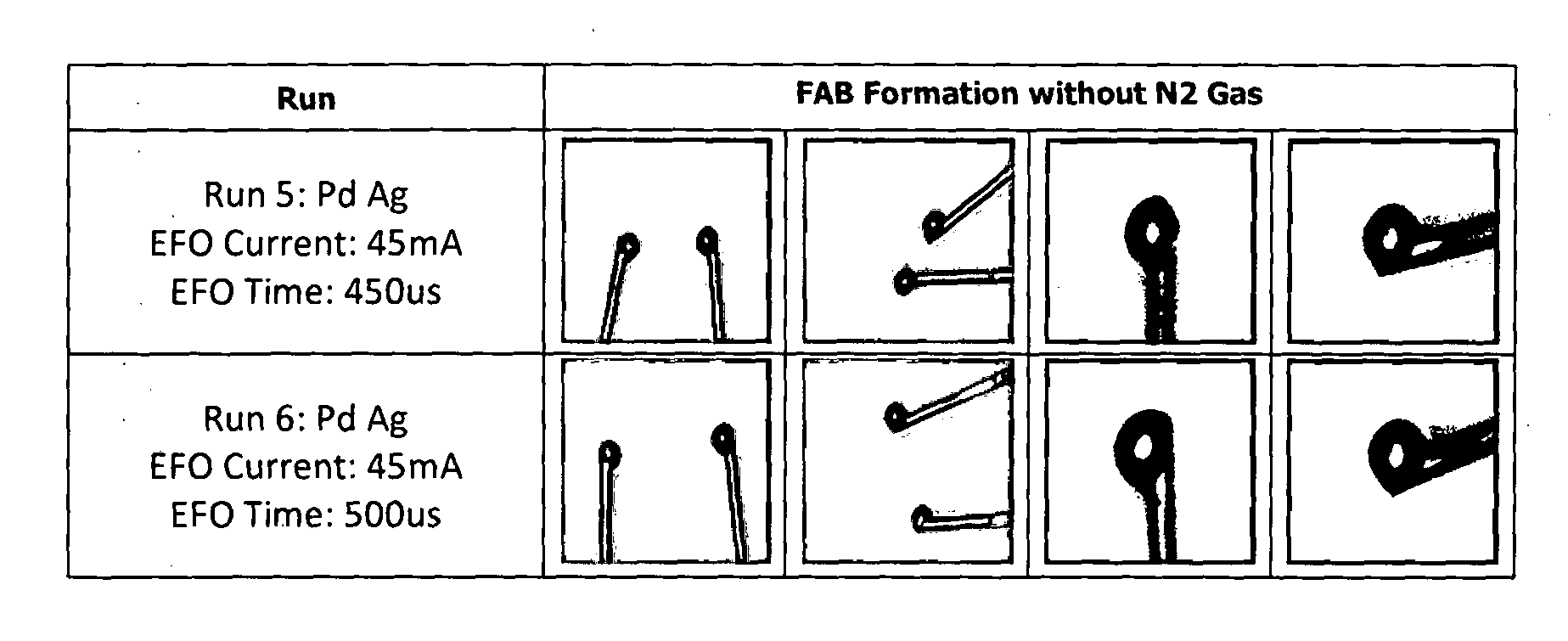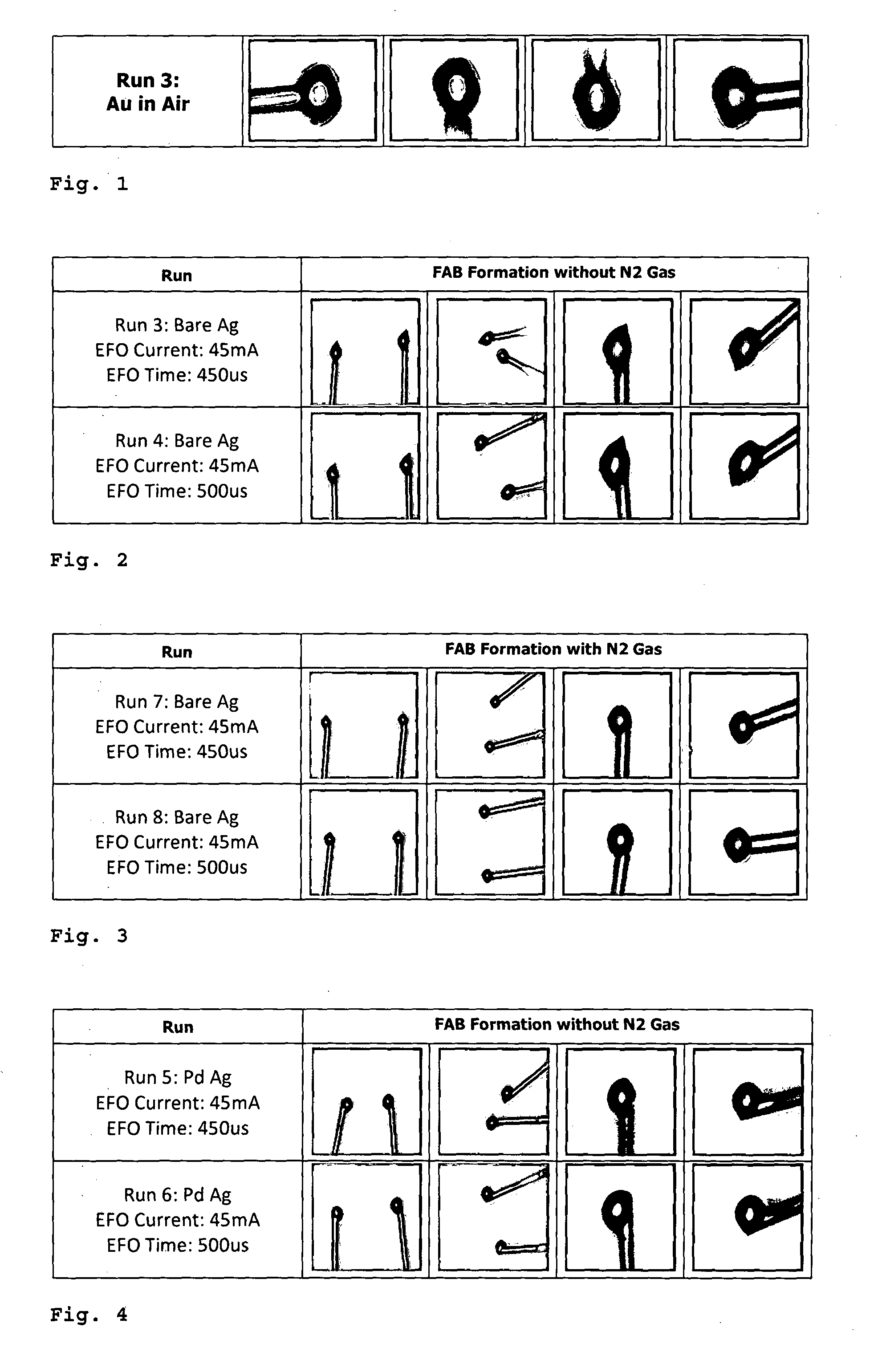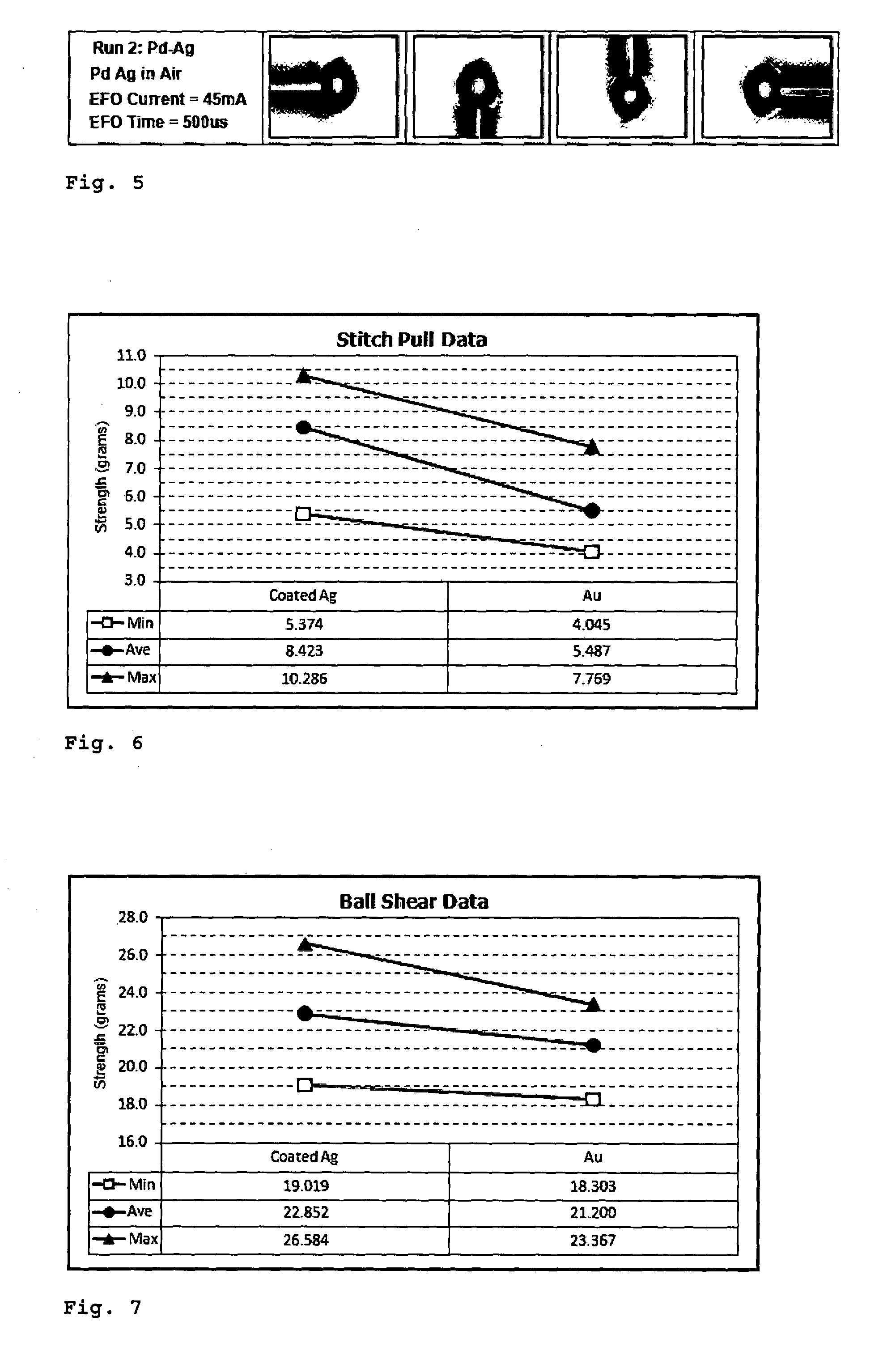Bonding wire and process for manufacturing a bonding wire
a technology of bonding wire and manufacturing process, which is applied in the direction of metallic material coating process, solid-state devices, conductive materials, etc., can solve the problems of difficult copper wire, limited success, and high cost of gold as bonding wire material, and achieve the effect of improving the consistent performance of free air ball
- Summary
- Abstract
- Description
- Claims
- Application Information
AI Technical Summary
Benefits of technology
Problems solved by technology
Method used
Image
Examples
Embodiment Construction
[0069]Coated Silver Wire
[0070]FIG. 1 shows photos of a free air ball formation of an uncoated gold wire (purity ≧99%). The results are perfect spheres formed by the gold wire in an air environment. The photos show the current standard for ball-bonding, i.e. high purity (≧99%) gold wires forming free air ball in air environment. As shown, the resuiting free air balls are spherical, axi-symmetric, smooth and oxide / contaminant free.
[0071]FIG. 2 shows photos of a free air ball formation of an uncoated silver wire (purity ≧99%) in air. Two runs were performed, one at an electrical flame off (EFO) time of 450 ρs, the other at an EFO time of 500 ρs. Both resulted in poorly formed free air balls (FABs), the resulting FABs are pointed with a severely distorted shape.
[0072]FIG. 3 shows photos of a free air ball formation of an uncoated silver wire (purity ≧99%) in nitrogen gas (N2). Again, two runs were performed, one at an EFO time of 450 μs, the other at an EFO time of 500 ρs. The results w...
PUM
| Property | Measurement | Unit |
|---|---|---|
| diameter | aaaaa | aaaaa |
| diameter | aaaaa | aaaaa |
| thickness | aaaaa | aaaaa |
Abstract
Description
Claims
Application Information
 Login to View More
Login to View More - R&D
- Intellectual Property
- Life Sciences
- Materials
- Tech Scout
- Unparalleled Data Quality
- Higher Quality Content
- 60% Fewer Hallucinations
Browse by: Latest US Patents, China's latest patents, Technical Efficacy Thesaurus, Application Domain, Technology Topic, Popular Technical Reports.
© 2025 PatSnap. All rights reserved.Legal|Privacy policy|Modern Slavery Act Transparency Statement|Sitemap|About US| Contact US: help@patsnap.com



